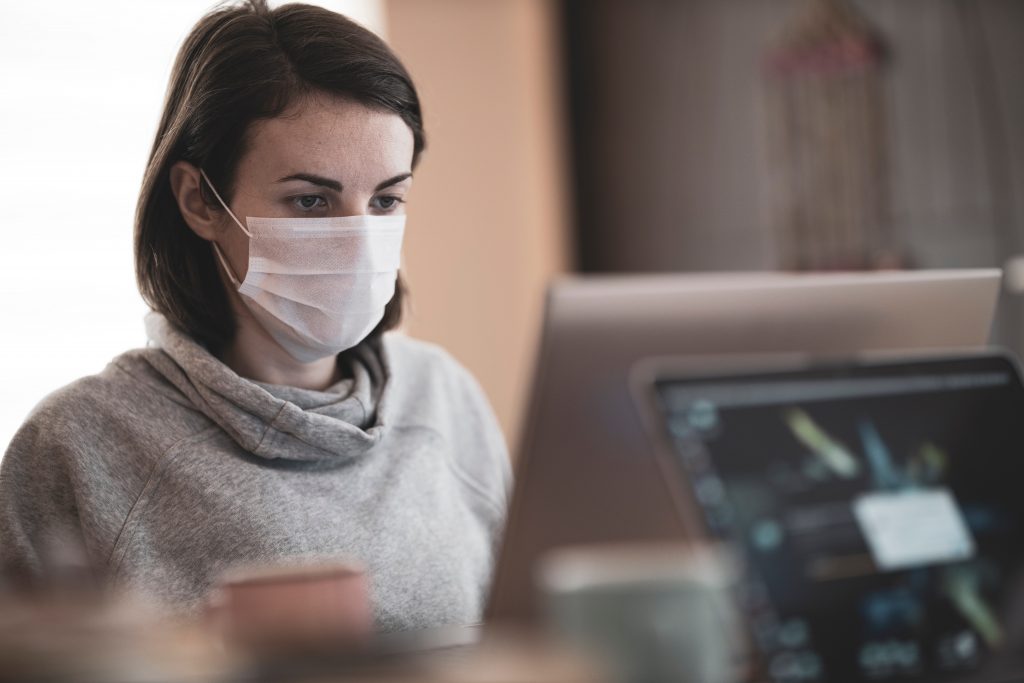November 17, 2020
Distance learning, exams and masks— oh my!

It’s one of the strangest exam seasons that we’ve ever run into. Student stress runs rampant in normal circumstances as they balance multiple tests, exams, projects and essays... and complications from COVID-19 are only making things worse.
Students are spending more time out of touch with their peers and teachers, making it difficult to ask questions in a timely way, organize study sessions, or have a consistent space geared toward studying and learning. As deadlines loom closer, the University of Minnesota recognizes that a lack of daily support can take a toll on mental health, as well as the drive to engage with school.
Our students need an empowerment boost, stat! Here are some tips to put them back into the driver’s seat of their education, and help them feel at ease with their day as they study and prepare for finals.
Plan time to start larger assignments, and break them down into smaller tasks
As a teacher, I can see an image clearly in my mind’s eye— a student with bags around their eyes, coffee in one trembling hand, and an essay completed within 10 minutes of the due date in the other. You gave the students a month to complete the assignment, so why did they leave their work to the last minute?
Oftentimes, students don’t know where to start— they lack initiation skills. We often give reminders to students, but without a clear roadmap on when to start each aspect of their assignment, they are likely to assume they have tons of time left to start studying or working... until the last minute.
Help students by encouraging them to break larger tasks into smaller steps, and offering suggestions on when to start and finish each step.
A big project due in two weeks can be a difficult undertaking for a student— but the manageable tasks of filling out a research organizer, completing an outline, drafting the project, creating a PowerPoint and practicing the presentation feel a lot less intimidating when assigned over a period of 14 days.
Providing a schedule of smaller tasks for students (and the option to check-in with you for accountability at each step) can help them feel less overwhelmed.
Keep a question journal
For students who are bouncing between in-class learning and distance education, those who are now 100% online, or even in-class students who are just plain shy, it can be hard to ask a question right when it comes to mind. I’ve had many times when I’ve called on someone with a raised hand, and their response was, “Uh… I forgot my question.”
Asking questions and gaining clarification are instrumental to active learning; allowing students to gain the subject mastery they need to ace their finals.
One way to keep those questions top of mind is by asking students to keep a question journal— a notebook or section of their binders dedicated specifically to questions that come to mind as they go through each lesson. Students can review their questions at the end of the class, and determine which are still unanswered.
Using this method, you’ll be able to support distance-learning students (or even just students unlikely to raise their hand) by answering their outstanding questions when you’re able to meet with them, as well as gaining a better understanding of their challenges with the material.
Create a workspace
Not every student has a space to themselves at home, or a quiet area they can go to when studying— which can be a struggle for kids who have difficulties focusing.
Although it can be hard to create the ideal study area, students can try a few creative solutions.
Playing white noise or classical music can help drown out distracting ambient sounds in a room. Some students are also able to focus with music— encourage them to experiment and learn what works best for them! Sitting upright can also help put students in a productive mindset versus a relaxed one, whether that means working at a desk or the kitchen table.
Finally, the Child Mind Institute suggests putting basic needs within reach to help students preemptively avoid distractions. Proactively having a healthy snack, water, and their resources in arms’ length can circumvent distractions.
Develop healthy habits
Of course, that’s not to say students shouldn’t pause to take a break at all! Scheduling regular breaks and time to decompress is important to focusing over long periods of time— but the key word is “scheduling.” Spontaneous breaks with no end in sight can easily become procrastination, so ask students to try to stick to a study/break schedule, or even use techniques like the Pomodoro method to stay engaged!
Additionally, some of the most mentally stabilizing breaks involve physical activity! The New York Times notes that even light physical activity correlates to better mental health. Whether your students are in-class or at home, encourage them to take occasional brain-breaks to do some jumping jacks, take a walk, or even something as simple as standing up and moving their bodies.
You can also suggest hourly health check-ins to students— while working on finals, have them ask themselves:
- Am I thirsty?
- Am I hungry?
- Am I too tired to continue effectively for the night?
- Have I stood up, stretched, and corrected my posture?
- Am I due for a break?
- Have I spoken to a friend or family member recently?
- Would I benefit from a few deep breaths?
Students can also use this system with a friend or virtual study group to keep self-care top of mind.
Finally, Harvard Health Publishing notes that sleep is intertwined with mental health. Encourage teenagers to get at least 8 hours of rest each night in order to feel emotionally steady and attentive during the day.